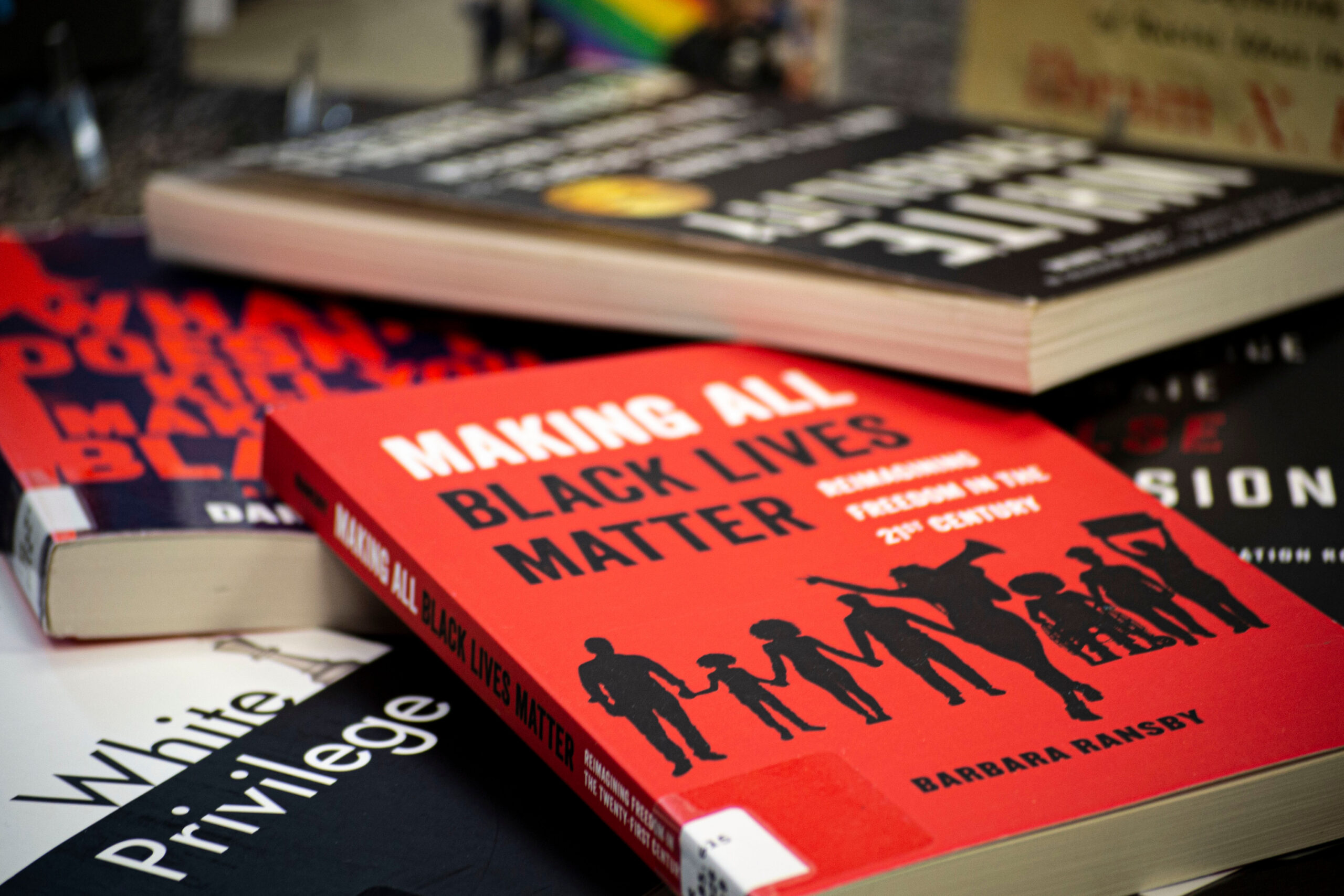The nonfiction section at the Good Library has always highlighted stories of our current times.
This semester, the fight for racial equality will be at the forefront.After a grant from Indiana Humanities was awarded to Goshen College, Fritz Hartman, library
director, began the hunt for 63 books, among a list of 300, to add to the library’s collection.
The Advancing Racial Equity Collection Development grant from Indiana Humanities is a one-
time $1,000 grant to help with purchasing books on racial equality and anti-racism.
“It should be noted that the people who selected these materials were no slouches,” Hartman
said. “[Some] were professors from Indiana University who wanted to try to get a wide range of
materials because there are a wide range of libraries out there.”
Some of the books on the Indiana Humanities list are already in the Good Library and can be
found on the new nonfiction book stand.
Those books include, What Doesn’t Kill You Makes You Blacker by Damon Young, discussing
the struggles of African Americans. Another book, Things That Make White People
Uncomfortable, by Super Bowl champion Michael Bennet, discusses police violence, the
importance of protests and “the responsibilities of athletes as role models to speak out against
injustice.”
“We’re not going to buy copies of things we already have,” Hartman said. “[The Indiana
Humanities] had a lot of DVDs on the list, so we took those out. We then tried to take out stuff
that was geared mainly for public libraries like what Lebron James thinks on this and what not.”
“I only had a couple of days to do it before the deadline,” Hartman said, while mentioning the
Indiana Humanities made an exception for the Good Library. The grant is normally only
awarded to public libraries.
“We wanted to focus on academic books,” Hartman said, “so we wanted to get the books that we
felt would work best for class assignments. From there, it was pretty easy.”
Hartman hopes to display the books as soon as they arrive.
“It depends on availability,” Hartman said. “We all hope they come in at once … though if we
have a trickle-in situation, we don’t want to keep the books back a little bit, we’d rather get them
out there.”
Another factor for display consideration is COVID-19.
“Displays are a bit tricky right now in this environment,” Hartman said.
Once the books arrive, they will be dispersed throughout the collection.
“It’s been our experience that, when we make those specialized collections, you have to be very
careful,” Hartman said. “Sometimes you ostracize books from their subject areas.”
“And students, oftentimes when they’re looking for a specific topic, just go to the shelf and
browse, and that’s the point of contact,” Hartman said. “That’s where we want them to find it.
Not to say I’m not opposed to separate collections, but there’s just too few books, so it wouldn’t
make much sense.”
Before COVID-19, Hartman hoped to organize a discussion group for the books. Some faculty
have already begun to do so.
Hartman hopes that the books will “stimulate some discussion in these areas of racial equality.”
A Zoom-based discussion is not off the table, he added.
“Right now we have nothing specific planned,” he said. “We haven’t looked at the books yet
either. We know what books are coming in, but once we have it in hand, then we might come up
with something that’s a little bit more focused.”
For now, Hartman highlights the theme of racial equality among the 63 books.
“I’m not saying overcollect in this area,” Hartman said. “Everybody’s topic is important, but we
want to have a focus, a little bit more of an intentional focus on this particular issue because it’s
important at this particular time.”



